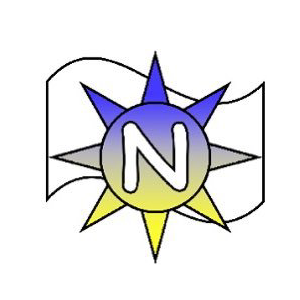COMPUTING AT NORTHWAY
Computing at Northway aims to prepare children to participate in a rapidly changing world in which work and other activities, are increasingly transformed by access to varied and developing technology. In an increasingly digital world, there now exists a wealth of software, tools and technologies that can be used to communicate, collaborate, express ideas and create digital content. Our vision is for all pupils in our school to become confident users of IT so that they gain the skills necessary to become digitally literate and participate fully in the modern world.
At Northway, we aim to:
*Provide a broad, balanced, challenging and enjoyable curriculum for all pupils ensuring continuity and progression in all strands of the Computing National Curriculum.
*Meet the requirements of the national curriculum programmes of study for computing
*Use computing as a tool to enhance learning throughout the curriculum
*To provide children with opportunities to develop their computing capabilities in all areas specified by the Curriculum
*To equip pupils with the confidence and capability to use computing throughout their later life
*To develop the understanding of how to use computing safely and responsibly and educating children to be good ‘Digital citizens’.
The Computing curriculum?is organised over a two-year cycle to meet the needs of our mixed age classes. Unit plans are set out on the whole school knowledge map. Lessons are differentiated to meet the needs of the individual learner and prior learning is built upon. Planning is progressive and teaches children the skills that they then apply in a final project for each unit of work to show what they can achieve independently. Where possible, this final project will be cross curricular to engage children and make learning meaningful.
There are five areas of Computing which children learn about: programming, computers and computer systems, multimedia, data handling and eSafety.
EYFS
Computational thinking and the use of digital devices is embedded throughout the EYFS curriculum to enhance learning and engagement. In EYFS, children are exposed to computer programming through a child-led approach. Teachers will plan guided activities using iPad apps to scaffold and teach basic programming skills that sets children up so that they are ready to experience the National Curriculum in Year 1.
KS1?
In Key Stage 1,?children are introduced to computers as technology and understand how they are used in familiar situations such as school and home but also in the wider world. They begin to learn basic computer skills such as how to turn and log on to a computer, use a mouse and type using a keyboard. Through multimedia, children learn the skills of sending and receiving emails, taking and editing photographs, creating music using patterns and begin to use a word processor. In programming children use physical programming with Beebots to begin to learn about sequences. They use iPad apps such as Scratch Jr to apply this skill to block programming. Children are taught about eSafety both discretely in Computing but also in PSHE, assemblies and during theme days such as ‘Safer Internet Day’.
KS2?
In Lower Juniors, children begin to learn more about computers and computer systems and how computers are networked and how networked devices make up the internet. In programming, children focus on using the key skills of sequence and repetition across different programming formats such as Scratch and Logo. In Multimedia, children continue to develop their understanding of using word processors from KS1 and learn how to combine text and images for a given purpose and they create animations and podcasts for cross curricular topics. In Lower Juniors, children begin to learn about data handling through using branching data bases and data loggers. Children are taught about eSafety both discretely in Computing but also in PSHE, assemblies and during theme days such as ‘Safer Internet Day’.
In Upper Juniors, children learn more about computer systems and how information is transferred between devices and allows for collaborative learning. They go on to learn about the World Wide Web and how search engines work. In programming, they revisit the skills of sequence and repetition and go on to learn about how selections and variables work. They apply this to physical programming using Code Bugs, Crumbles and Spheros. In Multimedia, children build their own websites, learn about vector drawings and take and edit videos in cross curricular learning. They continue to learn about data handling using spreadsheets and flat file databases. Children are taught about eSafety both discretely in Computing but also in PSHE, assemblies and during theme days such as ‘Safer Internet Day’.

